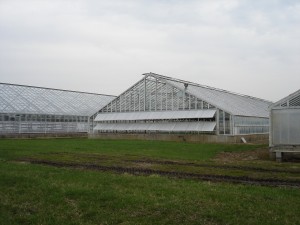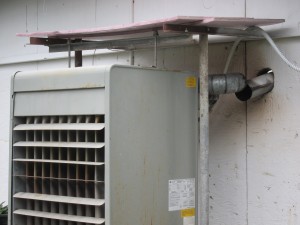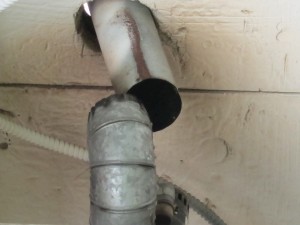How to prevent ethylene damage
The proper maintenance and installation of heating units is the best way to prevent ethylene damage in the greenhouse. Regular maintenance should include inspection of heat exchangers, exhaust vent stacks and fuel lines. Leaks in gas lines can be identified by looking for bubbles following the application of soapy water. The heater should have a stable flame with a blue cone center. A yellow or orange flame indicates there is not enough oxygen for complete combustion of the fuel. Incomplete combustion can result in the production of harmful gases including ethylene and carbon monoxide. An outside air supply duct may be needed to provide enough oxygen for complete combustion, and proper air exchanges help remove contaminants like ethylene gas from the greenhouse.
Indirect fired heaters must be vented outside of the greenhouse so that the byproducts of combustion are not released directly into the growing environment. A few considerations for non-power vented heaters include the height of the exhaust stack and placement near vents that are bringing air into the greenhouse (Figure 1). Greenhouses should follow the 2:3:10 rule if you are using passive ventilation from a vertical chimney stack. The top of the chimney stack must be at least 2 feet above the ridge of the roof. If the chimney placement is on the edge of the roof then the top of the stack must be at least 3 feet above the roof surface. This chimney top must be high enough above the roof of the greenhouse such that at it is at least 10 feet across to the nearest roof surface. In other words, a horizontal line drawn from the top of the chimney must run at least 10 feet before it touches a roof surface. Concurrent heating and venting for relative humidity management or high wind velocities can create a negative pressure in the greenhouse that results in a downdraft that sucks the exhaust gases back into the greenhouse. Power-vented heaters use a blower to actively exhaust the flue gases and this prevents problems with back drafts. These vents can run horizontally out the wall of the greenhouse and should be at least 3 feet from any air intakes.
- Figure 1. Improper chimney heights and heaters that are not properly vented result in combustion byproducts, including ethylene, coming back into the greenhouse.
Unvented burners have been used by growers to enrich the growing environment with CO2, but all combustion byproducts including ethylene are also released into the greenhouse. Recently, higher capacity direct-fired heaters have become available for heating production environments. These heaters are not vented and all products of combustion go into the greenhouse for heating. If these heaters are installed according to the manufacturer’s instructions and have proper air exchange to reduce relative humidity and insure efficient combustion, they can be run without producing ethylene. For a little piece of mind with any heater, vented or non vented, grow a few tomatoes near them as indicator plants.
Avoid the use of any equipment or vehicles that use combustion engines. Use only electric carts to move plants within the greenhouse. If you must use propane powered forklifts in loading docks make sure these areas are well ventilated to remove any ethylene that might be generated.
Dr. Michelle L. Jones
D.C. Kiplinger Chair in Floriculture
Associate Professor
The Ohio State University
Department of Horticulture and Crop Science
330-263-3885
Jones.1968@osu.edu



